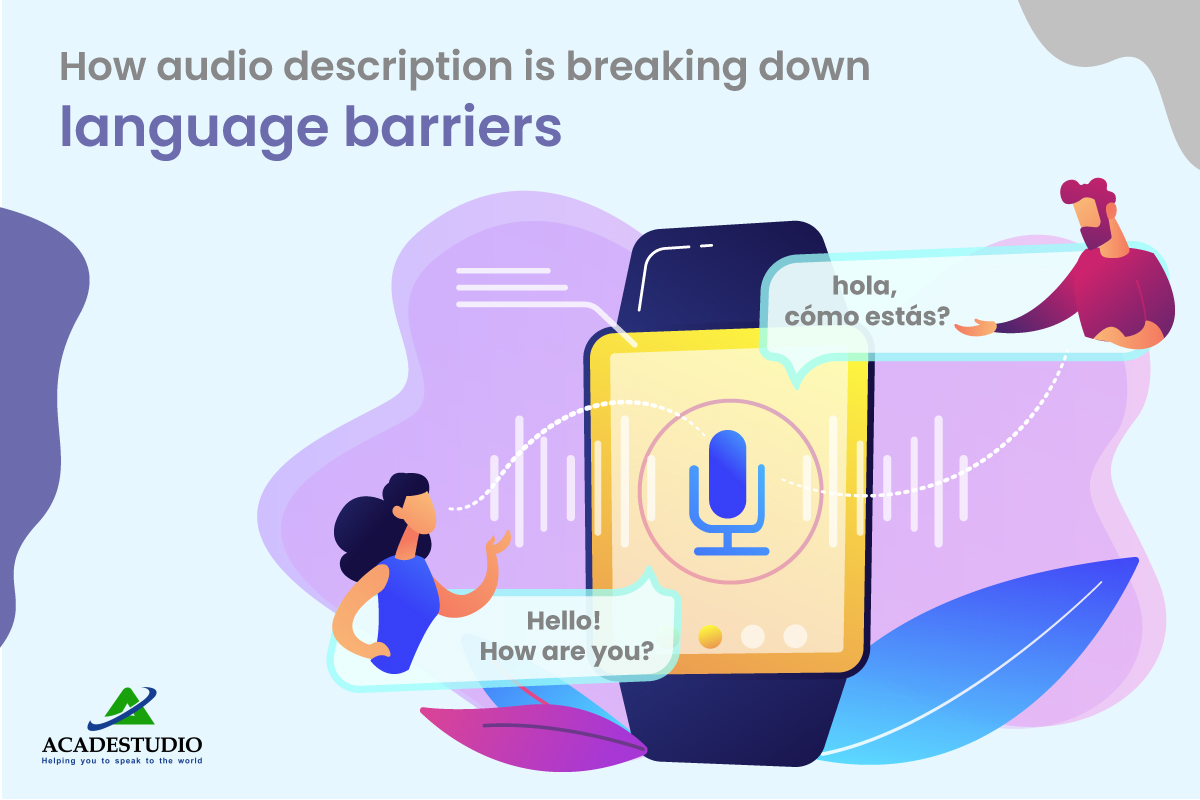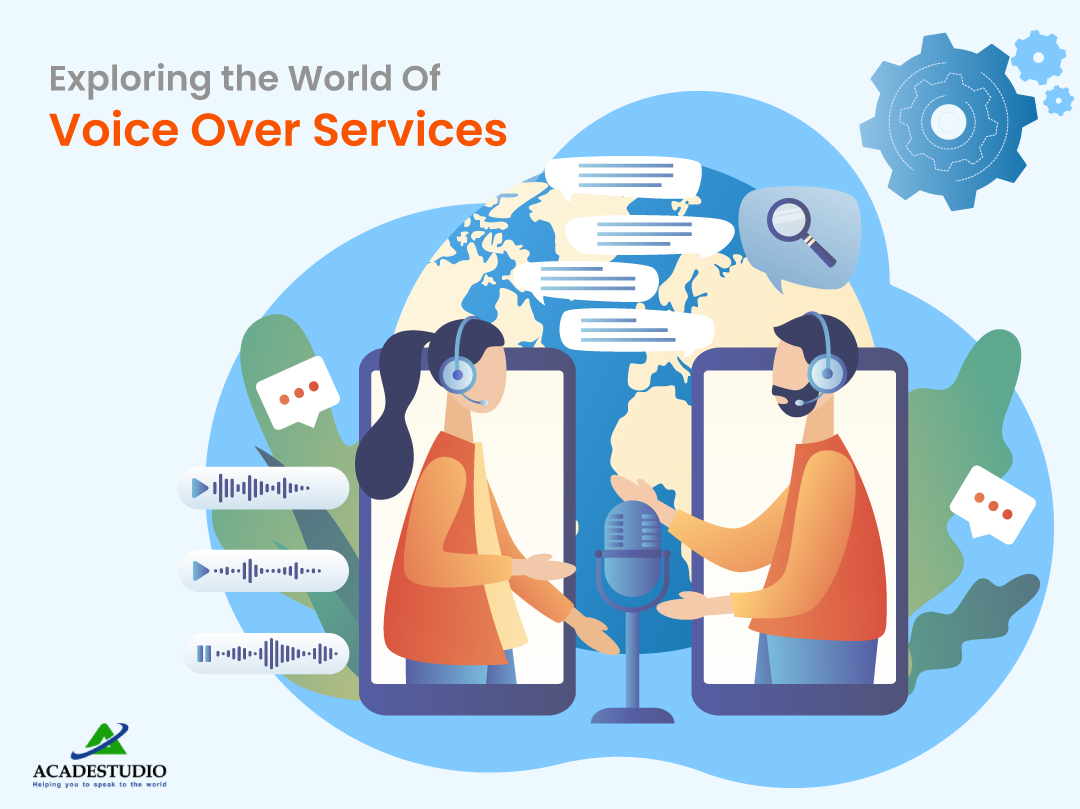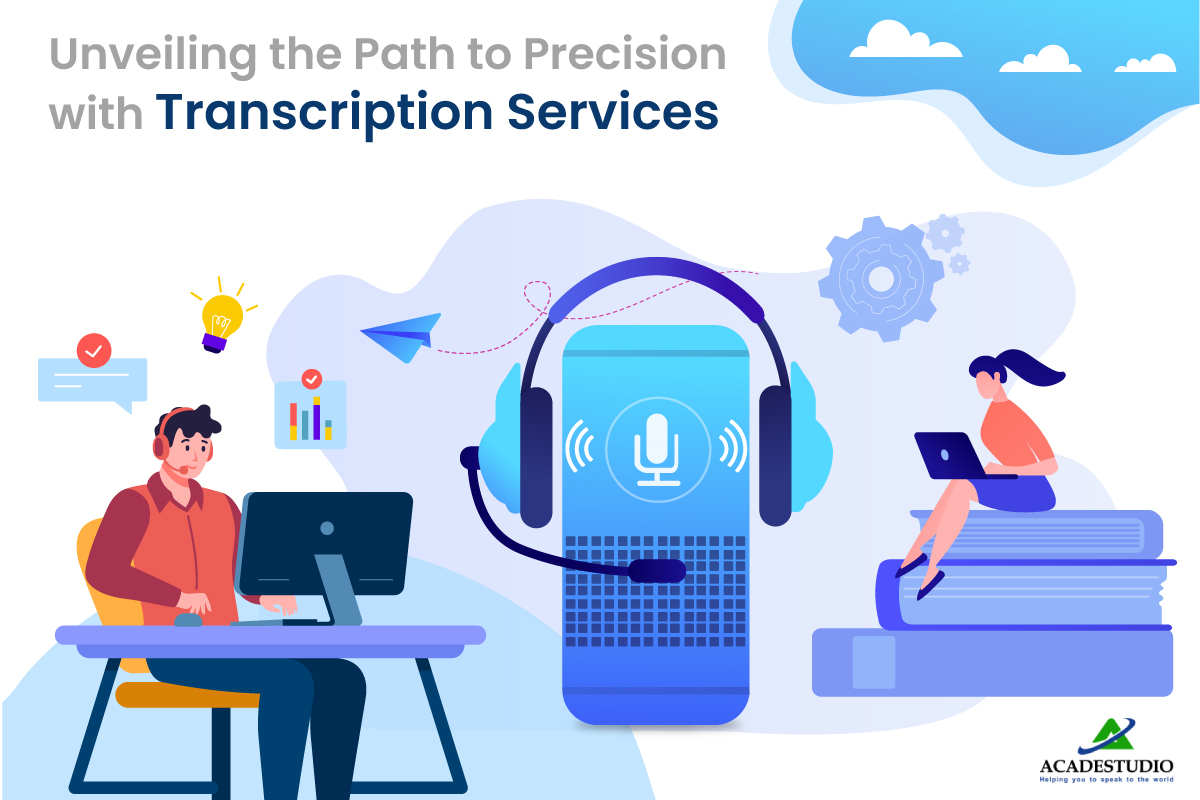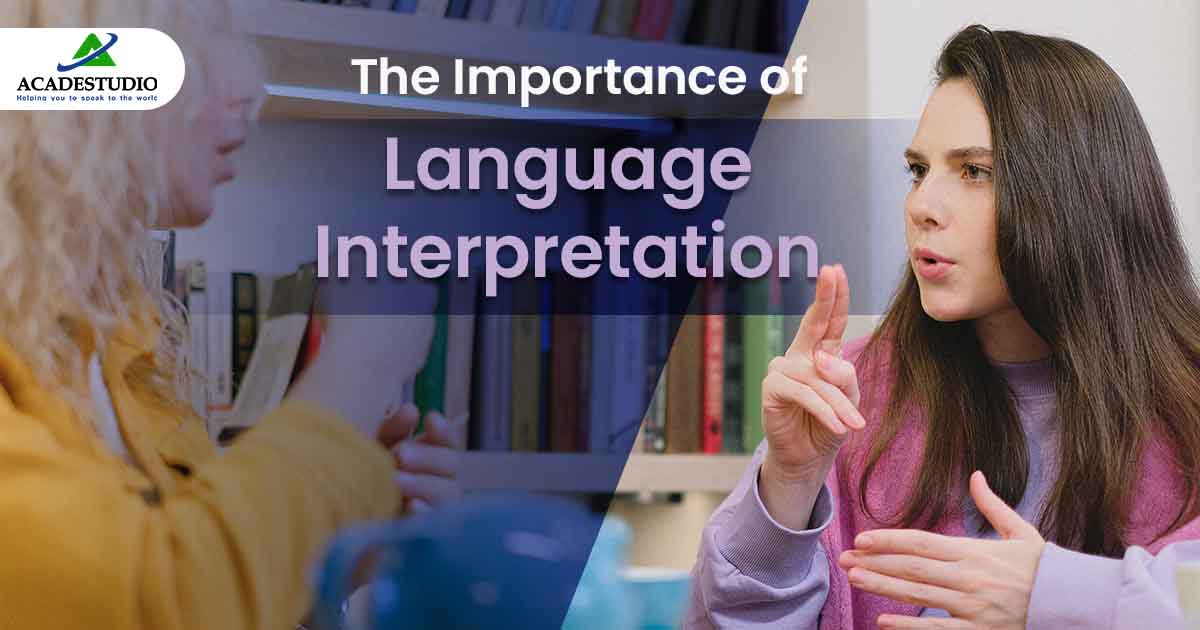In an era of rapid globalization and interconnectedness, the mediums we communicate and share stories have evolved dramatically. Audio Description Services is one of the most transformative tools that has emerged at the forefront of this change. Originally developed to narrate visual content for the visually impaired, these services are now reshaping how we understand and consume media, transcending traditional boundaries and breaking down language barriers. As we delve into this topic, we'll explore how these services are not just enhancing accessibility but also fostering a more inclusive global community.
What is Audio Description?
Audio description, an innovative tool in media and entertainment, has revolutionized how we perceive visual content. Initially designed to assist the visually impaired, these services provide a voiceover narration, succinctly describing visual elements of content, from films and theatre performances to museum exhibits. As the world grows more interconnected, the significance of audio description has expanded dramatically. Beyond catering to those with visual challenges, it's now an essential bridge for cultural and linguistic understanding.
Interestingly, while the primary function remains to elucidate visual details, its scope has evolved to break down language barriers and enhance cultural inclusivity. This evolution underscores the dynamic nature of media consumption today and the need for tools that promote universal understanding. As we continue to engage with diverse content, audio description stands out as a beacon of accessibility and inclusivity.
How the Audio Description is Bridging Language Gaps
While initially designed for the visually impaired, audio description services are invaluable in bridging the gap between different languages. Here's how:
A New Era of Inclusive Media
In today's globalized world, consuming media from different cultures has become commonplace. Yet, linguistic differences can be barriers, preventing full appreciation of content. Enter audio description services, a groundbreaking tool originally designed for the visually impaired. Moreover, these services offer spoken narration of visual elements, and in doing so, they are quietly reshaping our media consumption landscape. Consequently, a more inclusive, universally accessible media ecosystem is emerging, enabling a richer understanding of diverse content.
Beyond Visual Narration to Linguistic Mastery
As the demand for global content skyrockets, the role of audio description services has evolved. No longer limited to narrating visual cues, they now bridge linguistic gaps. In addition, these services transform passive viewers into informed global audiences by providing context, clarifying cultural nuances, and offering translations. The impact? A deeper, more genuine appreciation of international content.
The Cultural Exchange Catalyst
Culture and language are inextricably intertwined. When we watch a foreign film or series, we aren't just navigating language but delving into a different cultural paradigm. Audio description services, in this light, act as cultural ambassadors. Moreover, they don't just translate words; they convey emotions, traditions, and societal nuances. This facilitation of cultural exchange fosters empathy, broadens horizons, and enriches our global perspective.
Educational Frontiers and Global Classrooms
Education, like entertainment, has become increasingly international. From foreign lectures to international documentaries, the scope for learning is boundless. Audio description services are pivotal in ensuring language doesn't hinder knowledge acquisition. By offering clear, contextual translations and descriptions, they are ushering in an era where global classrooms are accessible to all.
Empowering Film Festivals and International Cinema
Film festivals have long been venues where diverse cinematic narratives converge. Despite their richness, language differences often hindered their universal appeal. Audio description services are now emerging as the key to unlocking this potential. By meticulously detailing subtle dialogues, visual cues, and inherent cultural nuances, these services allow films to resonate deeply with a global audience. Thus, as a result, the world of international cinema is expanding, inviting more viewers to immerse themselves in the myriad of stories the global filmmaking community offers.
Broadening the Theatre Experience
Theatre, a dynamic blend of visual and auditory storytelling, sometimes remains elusive to foreign audiences due to language disparities. Enter audio description services seamlessly weave translations and contextual information into the theatrical tapestry. Additionally, this approach ensures that the heart and soul of a performance, its themes, emotions, and cultural undertones, are universally accessible. With this, theatre transcends its traditional boundaries, becoming a shared experience that resonates globally.
The Museums and Exhibitions Revolution
Museums stand as monuments to human history, art, and culture. Yet, language barriers often diminish the experience for international visitors. This is where audio description services come to the fore. By providing in-depth explanations of exhibits, highlighting the significance of artifacts, and drawing attention to the nuances of displayed art, these services foster a deeper connection between the viewer and the subject matter. Thus, museums evolve from mere viewing spaces to immersive learning environments for all, regardless of language.
Augmented Reality (AR) and Virtual Reality (VR) Integration
The realms of AR and VR are redefining immersive experiences. Coupled with audio description services, they promise a richer, more inclusive digital journey. Whether users are embarking on a VR historical tour or navigating an AR art exhibit, these services ensure that the content is seen and fully understood. Hence, as technology continues its forward march, integrating audio descriptions ensures no user is left behind, bridging the digital language divide.
Boosting Tourism and Global Exploration
Exploring foreign lands is an exhilarating adventure, but language barriers can sometimes dampen the experience. Here's where audio description services shine. Integrated into travel apps or used by tour guides, they offer travelers a nuanced understanding of local cultures, historical landmarks, and traditions. Moreover, by diving deep into the stories, legends, and histories of places, these services transform every tourist spot into a rich narrative experience, making global exploration truly memorable.
The Rising Demand for Audio Description
In an age where accessibility and inclusivity in media consumption are gaining prominence, audio description solutions are witnessing a remarkable surge in demand. As we probe deeper, several factors contribute to this upward trajectory. Following are:
Broadening Accessibility in Entertainment
Visually Impaired Audiences: One of the most notable benefactors of audio description is individuals with visual impairments. These services provide an enriched experience, transforming how they engage with visual content.
Mainstream Adoption: More filmmakers and producers are integrating audio descriptions not just as an optional feature but as a staple, ensuring their content is accessible to everyone from the outset.
Globalization of Media
Diverse Content Consumption: With platforms like Netflix and Amazon Prime offering content from all over the world, there's a need for services that can bridge cultural and linguistic gaps.
Cultural Context: Audio description doesn't just narrate; it provides context. This is invaluable when watching content from a culture different from one's own, ensuring that nuances and subtleties aren't lost.
Education and E-learning
Global Classrooms: With the rise of online learning platforms, students worldwide can access courses from top universities. Audio descriptions make these resources more accessible, especially when visual aids are pivotal to the learning experience.
Multimedia Integration: As modern teaching employs more multimedia, audio descriptions become even more crucial in ensuring all students receive equal learning opportunities.
Emerging Technologies
Virtual Reality (VR) and Augmented Reality (AR): These tech realms redefine immersive experiences. Combined with audio descriptions, they offer a richer, more inclusive experience, crucial for those relying heavily on auditory cues.
Interactive Platforms: Modern interactive platforms, including certain video games and simulations, are exploring audio descriptions to make their platforms more user-friendly and inclusive.
Future Prospects
The trajectory of audio description services points towards an expansive horizon. As we delve into the not-so-distant future, it becomes evident that these services are an emerging trend and an integral part of the media and communication landscape.
The realm of entertainment is only the starting point. With the success of audio description in movies, series, and theatre, there's an anticipation of its expansion into other entertainment sectors. Imagine live sports events with audio descriptions, enhancing the experience for those who might not comprehend every visual nuance. Or music festivals, where the visual spectacles on stage are transformed into vivid auditory experiences.
Moreover, the education sector promises even more potential. As global classrooms become the norm and multimedia takes center stage in pedagogy, audio descriptions will become indispensable. They won't merely serve as tools for accessibility but will be pivotal in enhancing comprehension. When paired with descriptive audio, complex visual concepts can be grasped more intuitively, ensuring that learners, irrespective of their visual capabilities, are on an even playing field.
In addition, the tech industry is another frontier where audio description plays a significant role. As we stand on the cusp of a technological revolution with AR, VR, and mixed reality, integrating audio description will ensure these platforms are both immersive and inclusive. They'll cater to a diverse user base, making tech-driven experiences universally relatable.
Moreover, as global narratives push towards sustainability and inclusivity, there's a latent demand for tools that make everyday life more accessible. In addition, Audio description services might find applications in public transport, city tours, or even in mundane tasks like shopping, assisting individuals in easily navigating and comprehending their environments.
The future of audio description is not merely promising; it's transformative. As societies progress and inclusivity becomes a benchmark of advancement, these services will stand as pillars supporting a more cohesive, understanding, and unified world.
Conclusion
The transformative power of audio description services goes beyond just providing accessibility; it's reshaping the fabric of our global community. Transcending language and visual barriers promises a more inclusive future for all. As we stand on the precipice of vast technological and societal shifts, these services will be pivotal, ensuring no one is left behind. In essence, we are crafting a more unified and understanding world through sound.











- From Mobile - 11 min ago
Bring to the table win-win survival strategies to ensure proactive domination. At the end of the day, going forward, a new normal that has evolved from generation X is on the runway heading towards a streamlined cloud solution.
- From Mobile - 7 min ago
Capitalize on low hanging fruit to identify a ballpark value added activity to beta test. Override the digital divide with additional clickthroughs from DevOps. Nanotechnology immersion along the information highway
- From Web - 2 min ago
A new normal that has evolved from generation X is on the runway
- From Mobile - 11 min ago
Capitalize on low hanging fruit to identify a ballpark value added
- From Web - 2 min ago
Real-time will have multiple touchpoints for offshoring.